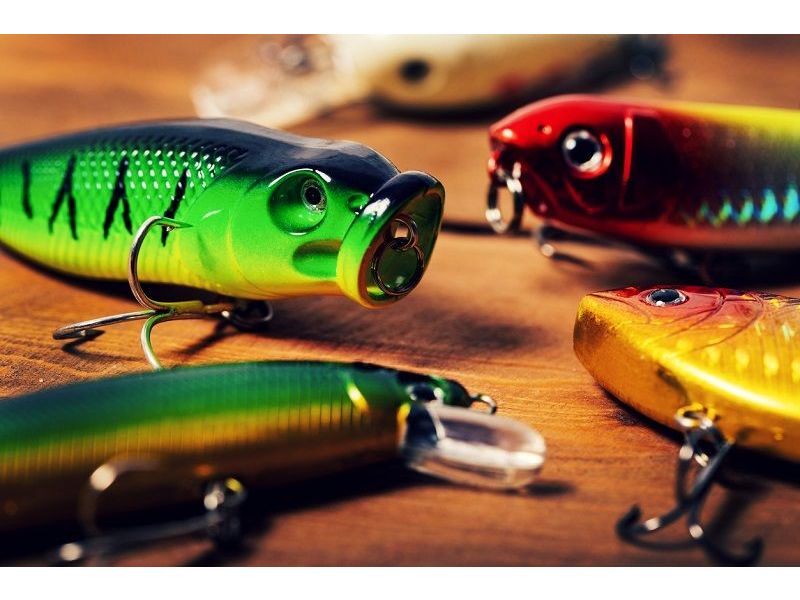Largemouth bass fishing is a favorite pastime for many anglers across the United States. Success in catching largemouth bass often hinges on employing the right techniques, which can vary based on water conditions, seasons, and fish behavior. Here, we delve into the most effective techniques for largemouth bass fishing to help you maximize your catch.
Table of Contents
ToggleBasic Techniques for Largemouth Bass Fishing
Casting and Retrieving
Casting and retrieving are fundamental techniques in largemouth bass fishing, particularly effective with lures such as crankbaits and spinnerbaits. When casting, aim for areas with cover such as weeds, rocks, or submerged logs where bass are likely to hide. The retrieval method can greatly influence your success:
- Steady Retrieve: A consistent, steady retrieve works well with crankbaits. This mimics the movement of prey fish, attracting bass.
- Stop-and-Go: This technique involves reeling in the lure, pausing briefly, then reeling again. The sudden stop-and-start motion can provoke a strike from a following bass.
- Jerking Motion: Especially effective with jerkbaits, this technique involves quick, erratic jerks of the rod tip, making the lure dart unpredictably, mimicking an injured fish.

Topwater Fishing
Topwater fishing is thrilling and effective, particularly during the early morning and late evening when bass are actively feeding near the surface. Popular topwater baits include:
- Poppers: These create a popping sound and splash on the water surface, attracting bass from a distance.
- Frogs: Best used in heavy vegetation, frogs imitate the natural prey of largemouth bass.
The key to topwater fishing is patience and maintaining a steady rhythm, pausing occasionally to mimic the natural movement of the prey.
Advanced Techniques for Largemouth Bass Fishing
Flipping and Pitching
Flipping and pitching are advanced techniques ideal for targeting bass in heavy cover such as weeds and brush. These methods allow for short, precise casts that minimize splash and disturbance.
- Flipping: Involves letting out a small amount of line, then using a pendulum motion to drop the bait into specific spots.
- Pitching: Uses a similar motion but with a bit more line, allowing for slightly longer casts. Heavy rods and braided lines are recommended for both techniques to handle the dense cover and large fish.
Drop Shotting
Drop shotting is an effective technique for deep water and clear conditions. The drop shot rig consists of a weight at the end of the line with the hook tied above it, allowing the bait to float off the bottom.
- Best Scenarios: Ideal for targeting suspended bass or those near the bottom. This technique works well in clear waters where bass can see the bait from a distance.
- Bait Choices: Soft plastics such as worms and minnows are commonly used with the drop shot rig.

Jig Fishing
Jigs are versatile and effective for largemouth bass, especially in structures like rocks and submerged timber. Different types of jigs serve various purposes:
- Football Jigs: Excellent for dragging along rocky bottoms.
- Swim Jigs: Designed for a swimming motion through water, ideal for covering large areas.
- Finesse Jigs: Smaller and lighter, perfect for clear water and pressured fish.
The key to jig fishing is to maintain contact with the bottom, feeling for subtle bites and changes in the structure.
Specialized Techniques for Different Conditions
Fishing in Heavy Cover
Heavy cover such as weeds and brush can be challenging but often holds large bass. Techniques for fishing in heavy cover include:
- Texas-Rigged Worms: A weedless setup that allows the bait to slide through cover without getting snagged.
- Weedless Jigs: Designed to move through vegetation while minimizing snags.
Fishing in Clear Water
Clear water requires a more finesse approach due to the increased visibility for bass. Techniques include:
- Finesse Worms: Smaller, natural-looking baits that attract bass without spooking them.
- Drop Shot Rigs: Effective in clear water to present the bait naturally above the bottom.
Fishing in Murky Water
Low-visibility conditions call for lures that create vibration and noise to attract bass:
- Spinnerbaits: These create flash and vibration, making them easier for bass to detect.
- Noisy Topwaters: Baits like buzzbaits or popping frogs are excellent for drawing attention in murky water.
Seasonal Techniques for Largemouth Bass Fishing
Spring Fishing: Spring is a prime time for bass fishing, particularly during the pre-spawn and spawning periods. Effective Lures: Jerkbaits, crankbaits, and spinnerbaits work well as bass are more aggressive and feeding actively.

Summer Fishing: In summer, bass often move to deeper, cooler waters. Techniques for Summer: Deep diving crankbaits and night fishing are effective during the hot months. Targeting shaded areas and deeper structures can yield good results.
Fall Fishing: Fall is a transition period where bass feed heavily to prepare for winter. Effective Lures: Jerkbaits and spinnerbaits mimic the prey fish that bass are chasing during this time.
Winter Fishing: Cold water slows down bass metabolism, requiring slower, more deliberate techniques. Best Lures for Winter: Jigs and blade baits, fished slowly along the bottom, are effective for lethargic winter bass.
Mastering the techniques for largemouth bass fishing can significantly enhance your success on the water. By understanding and applying these methods—whether basic, advanced, or specialized for different conditions and seasons—you can adapt to the behavior and preferences of largemouth bass, increasing your chances of landing that trophy fish. Practice and persistence, combined with the right techniques, will make every bass fishing trip a rewarding experience.

Robert Smith is the proud owner of Bait Barrels and Bows, a premier fishing sports store established in 1989. With over three decades of experience in the industry, Robert has honed his skills to become an expert angler, sharing his vast knowledge and passion for fishing with enthusiasts around the world. Through his store and writings, Robert provides invaluable tips and guidance, helping both novice and seasoned anglers improve their techniques and enjoy the sport to its fullest. His commitment to the fishing community is evident in his dedication to quality products and excellent customer service.

